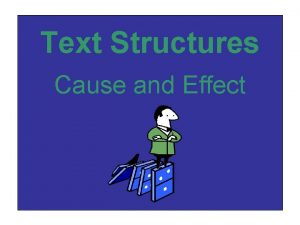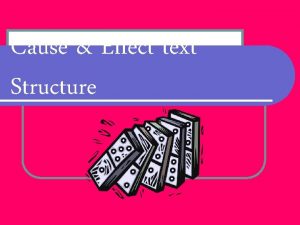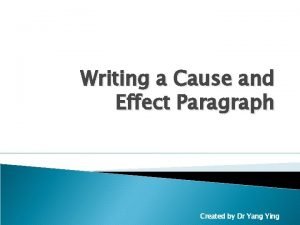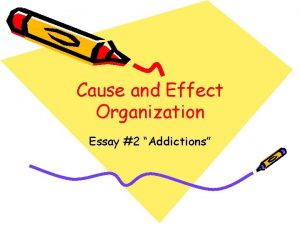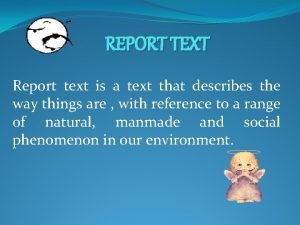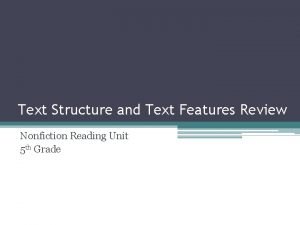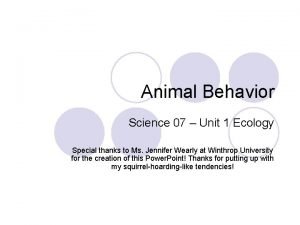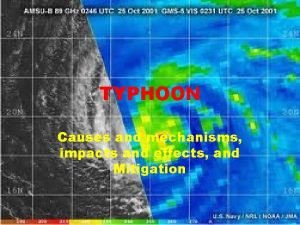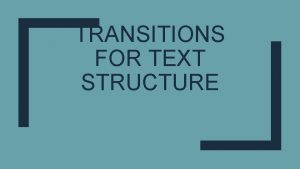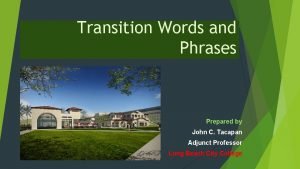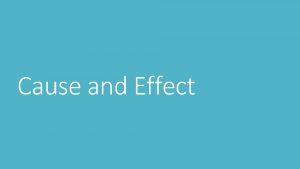Text Structure Cause Effect Cause and effect relationships















- Slides: 15

Text Structure

Cause & Effect ■ Cause and effect relationships occur whenever one event makes other events happen. Cue words because, so that, if… then, consequently, thus, since, for this reason, as a result of, therefore, due to, this is how, nevertheless

Examples ■ As a result of the drought, the stream was dry. ■ Elizabeth’s alarm didn’t go off, therefore, she missed the bus.

Comparison/Contrast ■ Compare-contrast is the process of identifying how things are alike and different. Comparison refers to how two things are alike; contrast refers to how they are different Cue Words Comparing: similar, like, still, likewise, in the same ways, in comparison, at the same time, in the same manner. ■ Contrasting: however, on the other hand, but, yet, nevertheless, conversely, rather, on the contrary, nonetheless, in contrast. ■

Examples The weather seemed perfect for skiing; however, the brutally cold temperatures made the day very unpleasant.

Sequential or Chronological ■ Sequencing refers to putting events or actions in order. One example is chronological order, as is common with historical events. Cue Words first, next, then, initially, before, after, when, finally, preceding, today, and following

Sequential ■ Lauren couldn’t wait to go horseback riding. First, she brought Magic in from the pasture. Next, she brushed him clean. After that, she saddled him. Finally, she was ready to go!

Concept/ Definition ■ An author uses this structure to define important concepts. ■ Cue Words refers to, is defined as, means, is called, thus

Examples ■ A hexagon is a polygon with 6 sides.

Enumeration, or Listing ■ Enumeration is used when things are being listed. Cue Words (or symbols) 1, 2, 3, Bullets First, second, third…

Examples ■ When packing for the camping trip please include the following: ■ Toothbrush ■ Soap ■ Sleeping bag

Process ■ This text structure explains how something happens, or how to do something. Cue Words Begins with, in order to, when, then

Example ■ Beat 3 eggs. ■ Add 1 cup sugar ■ Mix in 2 cups of flour and 1 cup of milk. ■ Bake at 350 for 30 minutes. ■ (although this LOOKS like a list, it is telling us HOW to do something, or describing a process)

Generalization ■ An author uses this text structure when she is writing about things that have all, or almost all of the same characteristics. Cue Words Always, in fact , never, typically, often

Examples ■ In Amherst it is rare to have temperatures in single digits. ■ Winter days are often as warm as 40 degrees. ■ Deciduous trees always lose their leaves in winter here.
 What is font
What is font Cause and effect example text
Cause and effect example text Making connections
Making connections Effect paragraph examples
Effect paragraph examples Block and chain essay
Block and chain essay Cause effect structure
Cause effect structure Generic structure of report text
Generic structure of report text Text features
Text features Ter thin client
Ter thin client Ultimate cause of behavior
Ultimate cause of behavior Proximate vs ultimate causation
Proximate vs ultimate causation Imprinting biology example
Imprinting biology example A just right government cause and effect
A just right government cause and effect Immature stage of tropical cyclone
Immature stage of tropical cyclone Cause and effect transition words
Cause and effect transition words Contradiction transition words
Contradiction transition words
